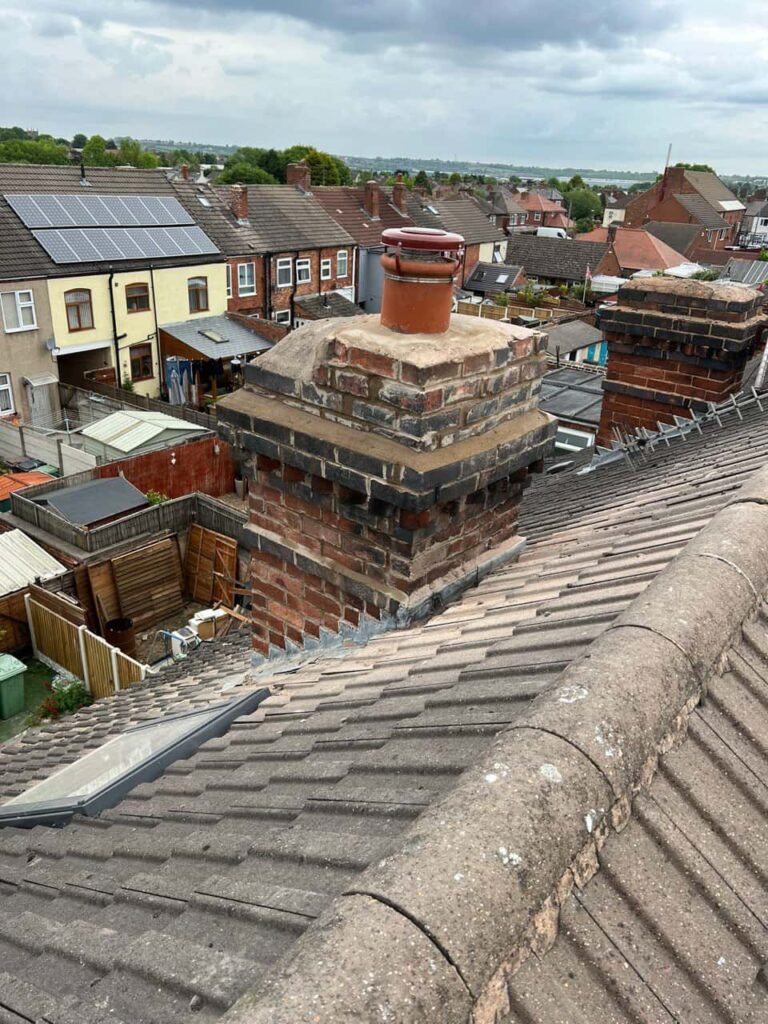Introduction: Flashing plays a crucial role when it comes to maintaining the integrity and longevity of your slate roof. Flashing is a protective barrier made from various materials, such as metal or rubber, designed to prevent water infiltration at vulnerable points on your roof. In this blog post, Heanor Roofing Repairs will delve into the significance of flashing in slate roof repairs and how it contributes to a watertight and secure roofing system.
1. Waterproofing Vulnerable Areas
Flashing is primarily installed in areas of the roof where water penetration is most likely to occur. These vulnerable areas include roof valleys, chimney junctions, skylights, vent pipes, and roof-to-wall intersections. Without proper flashing, water can seep into these regions, causing extensive damage to your slate roof and the interior of your home.
2. Preserving Roof Integrity
Slate roofs are renowned for their durability and longevity, but they are not immune to damage caused by moisture infiltration. When water penetrates the underlying structure of your roof, it can lead to rot, deterioration, and mould growth. Flashing acts as a barrier, preventing water from compromising the structural integrity of your slate roof.
3. Extending the Lifespan of Slate Tiles
Slate tiles are natural stone, and while they are resistant to many environmental factors, they can still be vulnerable to water damage over time. Flashing ensures that water is directed away from the vulnerable joints between slate tiles, preventing premature erosion and extending the lifespan of your slate roofing material.
4. Preventing Leaks and Interior Damage
One of the primary functions of flashing is to prevent leaks and water damage inside your home. When installed correctly, flashing creates a watertight seal at critical junctures on your roof, safeguarding your interior spaces from the harmful effects of water infiltration, such as stained ceilings, damaged insulation, and compromised structural elements.
5. Adaptable and Weather-Resistant Materials
Modern flashing materials are designed to withstand various weather conditions. Common materials include galvanised steel, aluminium, copper, and synthetic rubber. These materials are chosen for their durability and resistance to rust and corrosion, ensuring that your flashing remains effective for many years.
6. Professional Installation Matters
While flashing is essential for protecting your slate roof, proper installation is equally crucial. Flashing should be installed by experienced roofing professionals who understand the unique challenges of working with slate roofs. Poorly installed flashing can lead to more significant issues, including leaks and damage to your roofing system.
Conclusion: Flashing is critical to any slate roof repair or installation. Its role in preventing water infiltration and preserving the integrity of your roofing system cannot be overstated. To ensure that your slate roof remains watertight and secure, you must work with reputable roofing contractors like Heanor Roofing Repairs, who have the expertise to install and maintain flashing correctly. By investing in quality flashing and professional installation, you can enjoy the beauty and durability of your slate roof for many years.
Call us on: 01773 300 896
Click here to find out more about Heanor Roofing Repairs
Click here to complete our contact form and see how we can help with your roofing needs.

